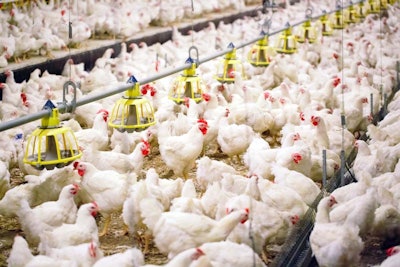
The gut microbiome is not just a buzzword when it comes to poultry health.
“When it comes down to discussing the gut and costs involved in growing an animal, we really concentrate on two areas: the diet of the animal and the health of the animal,” Dr. Mike Kogut, research microbiologist and lead scientist, Southern Plains Agricultural Research Center, said.
“Both of these components are very much involved in what we describe as gut health.”
During “The Gut’s Role in Poultry Health and Disease,” a quarterly webinar from the Poultry Science Association, Kogut explained how a better understanding of gut health – also known as the gut microbiome – can help increase production of meat and eggs, reduce antibiotic use and enhance animal welfare.
Gut health in humans vs. poultry
Gut health is also currently a major area of focus for human medicine, but Kogut was quick to clarify that there are some notable differences between gut health in humans and in poultry.
In humans, health is defined as the absence or the prevention of disease. Conversely, poultry are considered healthy when they reach 100% -- or as close as possible – of their genetic potential.
“The idea is that if we can improve the health of that animal by a single percent, that’s billions of dollars of profit to the farmer and to the industry,” he said.
Poultry gut health is a house of cards
Kogut compared poultry gut health to a house of cards that is dependent upon both internal and external factors, including feed, the climate and immunity of the bird.
Another way to think of the health of the microbiome is with the phrase ‘diet-microbiota-immunometabolism axis.’ Each component interacts with the others. For example, diet influences the microbiome, resulting in an altered immune response in the bird.
“It’s very delicate, but at the same time, each factor is dependent upon each other,” he said. “It is important to understand that it’s not just one component within the gut, but it is a bunch of different systems that work and regulate – not only at the intestinal level, but also systemically.”
Preliminary research suggests that manipulating the poultry microbiome could improve feed conversion and even reduce the incidence of woody breast and other meat quality defects.


















